Estonia Biodiversity and the Built Environment
Did you know that Estonia has some of the most energy-efficient buildings in Europe, with the lowest energy consumption? This small Baltic country has achieved remarkable success in energy efficiency and sustainability, making it a model for other nations to follow. From biodiversity preservation to sustainable architecture and eco-friendly construction, Estonia is leading the way in creating a harmonious balance between nature and the built environment.
Key Takeaways:
- Estonia boasts some of the most energy-efficient buildings in Europe, thanks to minimum energy performance requirements and the efforts of researchers and engineers.
- The country has implemented sustainable measures like bike-sharing programs and efficient public transportation to reduce carbon emissions.
- Estonia’s commitment to sustainable development includes green building certification programs and the use of green building materials.
- Tartu, Estonia’s second-largest city, is at the forefront of sustainability with initiatives such as revitalizing parks and transforming panel houses into energy-efficient smart houses.
- Estonia prioritizes biodiversity conservation and has a Biodiversity Strategy and Action Plan to protect habitats and species.
Estonia’s Energy Efficiency
Estonia is renowned for its impressive energy efficiency achievements, boasting some of the most energy-efficient buildings in Europe. With the lowest energy consumption rates in the region, Estonia has become a shining example of sustainable development and environmental conservation. This success can be attributed to the country’s strong commitment to energy efficiency and the implementation of various sustainable measures.
One of the key factors contributing to Estonia’s energy efficiency is the establishment of minimum energy performance requirements in 2019. These requirements ensure that new buildings meet stringent energy efficiency standards, resulting in reduced energy consumption and carbon emissions.
Furthermore, Estonia has focused on promoting sustainable transportation options to further alleviate its carbon footprint. The country has implemented bike-sharing programs and efficient public transportation systems, encouraging citizens to opt for eco-friendly modes of travel. These initiatives not only contribute to energy conservation but also improve air quality and reduce traffic congestion in urban areas.
Estonia’s commitment to energy efficiency goes beyond individual buildings and transportation systems. The country actively promotes sustainable measures in all aspects of its infrastructure, including the use of energy-efficient materials and construction techniques. By adopting green building practices, Estonia minimizes waste and maximizes energy savings, creating a more sustainable built environment.
Efforts in Action: Bike-Sharing Program in Tartu
An excellent example of Estonia’s sustainable measures can be seen in the bike-sharing program in Tartu, the country’s second-largest city. Tartu has implemented a comprehensive bike-sharing system, providing residents and visitors with a convenient and eco-friendly mode of transportation.
The bike-sharing program has gained immense popularity, with numerous docking stations strategically placed throughout the city. Users can easily rent a bike for short trips, reducing the reliance on cars and promoting a healthier and more sustainable lifestyle.
The success of the bike-sharing program not only contributes to reduced energy consumption but also fosters a sense of community and connection among residents. It creates a greener and more vibrant city, where people can easily navigate their surroundings while minimizing their environmental impact.
Building a Sustainable Future
Estonia’s energy efficiency initiatives and sustainable measures are vital steps towards building a greener and more sustainable future. By prioritizing energy efficiency, utilizing sustainable transportation options, and promoting eco-friendly construction practices, Estonia sets a positive example for other nations to follow.
The country’s dedication to energy conservation and environmental preservation demonstrates its commitment to creating a harmonious balance between human progress and the protection of the natural world.
| Benefits of Estonia’s Energy Efficiency | |
|---|---|
| 1 | Reduced energy consumption and carbon emissions |
| 2 | Improved air quality and reduced traffic congestion |
| 3 | Promotion of a healthier and more sustainable lifestyle |
| 4 | Creation of a vibrant and eco-friendly urban environment |
Through its relentless pursuit of energy efficiency and sustainable practices, Estonia is not only ensuring a cleaner and more sustainable environment for its citizens but also inspiring positive change on a global scale.
Sustainable Development in Estonia
Estonia has embraced sustainable development practices, recognizing the importance of balancing economic growth with environmental preservation. One of the key initiatives in this pursuit is the implementation of green building certification programs. These programs ensure that new constructions meet stringent sustainability standards, promoting resource efficiency, waste reduction, and minimizing environmental impact.
Green building certification in Estonia plays a crucial role in promoting sustainable construction practices. It encourages architects, developers, and builders to consider the long-term environmental consequences of their projects. By adhering to these certifications, stakeholders can mitigate the negative effects of construction on the environment and create more eco-friendly structures.
Resource efficiency is a vital aspect of sustainable development. Estonian green building certifications prioritize the efficient use of resources such as energy, water, and materials. This promotes the integration of energy-efficient technologies, water-saving measures, and sustainable materials in construction projects.
Waste reduction is another essential component of sustainable development. Green building certifications in Estonia emphasize waste management strategies, encouraging the reuse, recycling, and responsible disposal of construction materials. By minimizing waste generation and maximizing material efficiency, these certifications contribute to a more circular economy and reduce overall environmental impact.
The environmental impact of buildings extends beyond construction and encompasses the entire life cycle of a structure. Green building certifications in Estonia consider factors such as carbon emissions, indoor environmental quality, and biodiversity conservation. By implementing design and operational practices that reduce greenhouse gas emissions, improve indoor air quality, and protect surrounding ecosystems, certified buildings contribute to a more sustainable and resilient built environment.
The commitment to sustainable development through green building certifications not only benefits the environment but also promotes economic growth. Energy-efficient and environmentally friendly buildings offer cost savings in terms of reduced energy consumption and maintenance expenses. Additionally, they attract environmentally conscious investors, tenants, and customers, enhancing market competitiveness and establishing Estonia as a leader in sustainable development.
Emphasizing Sustainable Development:
“Our goal is to create a built environment that aligns with our vision of a sustainable future. Through green building certifications, Estonia is paving the way for sustainable development practices that prioritize resource efficiency, waste reduction, and environmental impact mitigation.” – Anne Liis Lahe, Sustainable Development Expert
As Estonia continues to prioritize sustainable development, the implementation of green building certifications serves as a catalyst for positive change. By embracing resource efficiency, waste reduction, and environmental impact mitigation, Estonia is setting a precedent for other countries to follow in creating a more sustainable and resilient built environment.
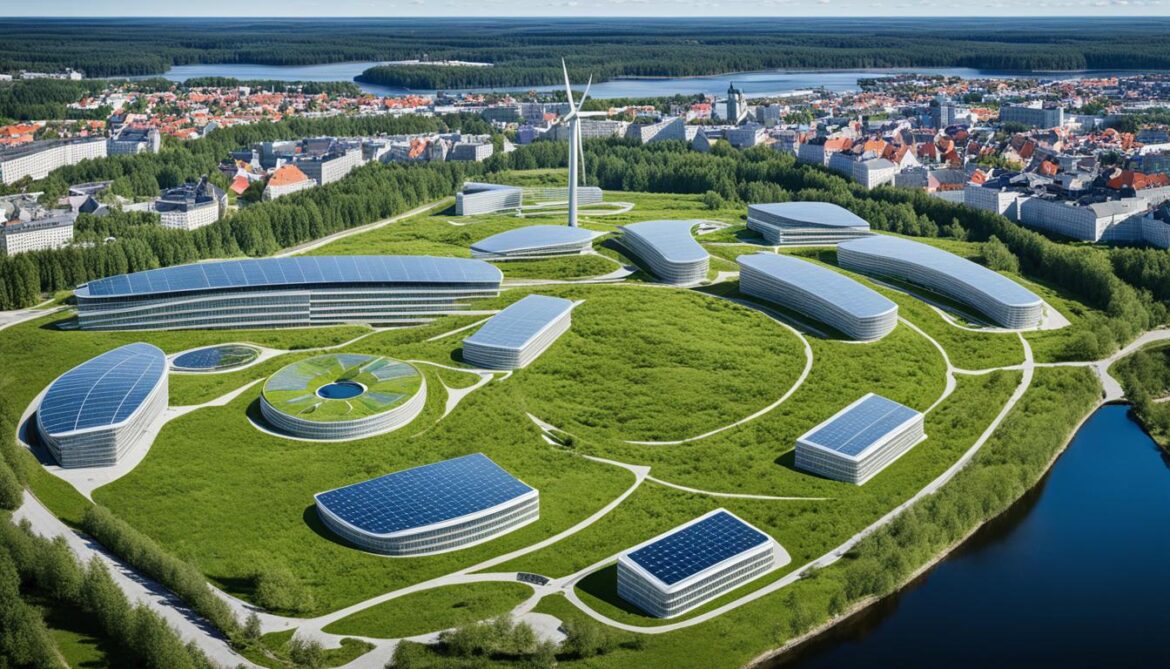
Sustainable Infrastructure in Estonia
Estonia is not only committed to constructing green buildings but also prioritizes sustainable infrastructure solutions to promote a greener future. The country’s initiatives, such as bike-sharing programs and efficient public transportation, play a crucial role in reducing carbon emissions and encouraging a healthier lifestyle. Moreover, Estonia embraces the use of green building materials in construction projects to minimize waste and enhance energy efficiency.
One of Estonia’s notable sustainable infrastructure projects is the implementation of bike-sharing programs. These initiatives provide convenient and eco-friendly transportation options for residents and visitors alike. By encouraging cycling as an alternative to motor vehicles, Estonia aims to reduce traffic congestion and lower greenhouse gas emissions. Individuals can easily access bikes from designated stations throughout the country, promoting a more sustainable and active mode of transportation.
In addition to bike-sharing programs, Estonia is dedicated to building an efficient public transportation system. The country’s public transportation network includes buses, trams, and trains that connect various regions. These modes of transportation are designed to be energy-efficient and reduce reliance on private vehicles. By offering reliable and affordable public transportation options, Estonia strives to promote sustainable mobility and reduce the environmental impact of transportation.
When it comes to construction projects, Estonia prioritizes the use of green building materials and eco-friendly construction practices. Green building materials, such as recycled materials and sustainably sourced timber, are utilized to minimize the environmental footprint of buildings. These materials not only contribute to energy efficiency but also promote resource conservation. By adopting eco-friendly construction practices, Estonia ensures that new buildings adhere to sustainable standards and contribute to a healthier environment.
Benefits of Sustainable Infrastructure in Estonia
| Benefits | Description |
|---|---|
| Reduced carbon emissions | Sustainable infrastructure initiatives, such as bike-sharing programs and efficient public transportation, help decrease the reliance on fossil fuel-powered vehicles, resulting in lower carbon emissions. |
| Improved air quality | By encouraging the use of eco-friendly transportation options and minimizing vehicle emissions, sustainable infrastructure contributes to improved air quality in Estonia’s urban areas. |
| Promotion of active lifestyles | Bike-sharing programs and convenient public transportation options promote active lifestyles and encourage individuals to incorporate more physical activity into their daily routines. |
| Resource conservation | The use of green building materials in construction projects helps minimize waste and promotes the responsible use of resources, contributing to a more sustainable and circular economy. |
| Energy efficiency | Sustainable infrastructure, coupled with the use of green building materials, enhances energy efficiency in buildings and reduces overall energy consumption, leading to long-term cost savings. |
Through its commitment to sustainable infrastructure, Estonia is paving the way for a greener and more sustainable future. By implementing bike-sharing programs, efficient public transportation systems, and utilizing green building materials, the country prioritizes environmental conservation and promotes a healthier and more sustainable way of living.
Tartu: Leading the Way in Sustainability
Tartu, Estonia’s second-largest city, is at the forefront of sustainable development and is making significant strides in creating a greener and more environmentally friendly urban landscape. As part of the European Commission’s 100 Climate-Neutral and Smart Cities initiative, Tartu has implemented various sustainability initiatives that focus on revitalizing parks, promoting urban biodiversity, and transforming outdated panel houses into energy-efficient smart houses.
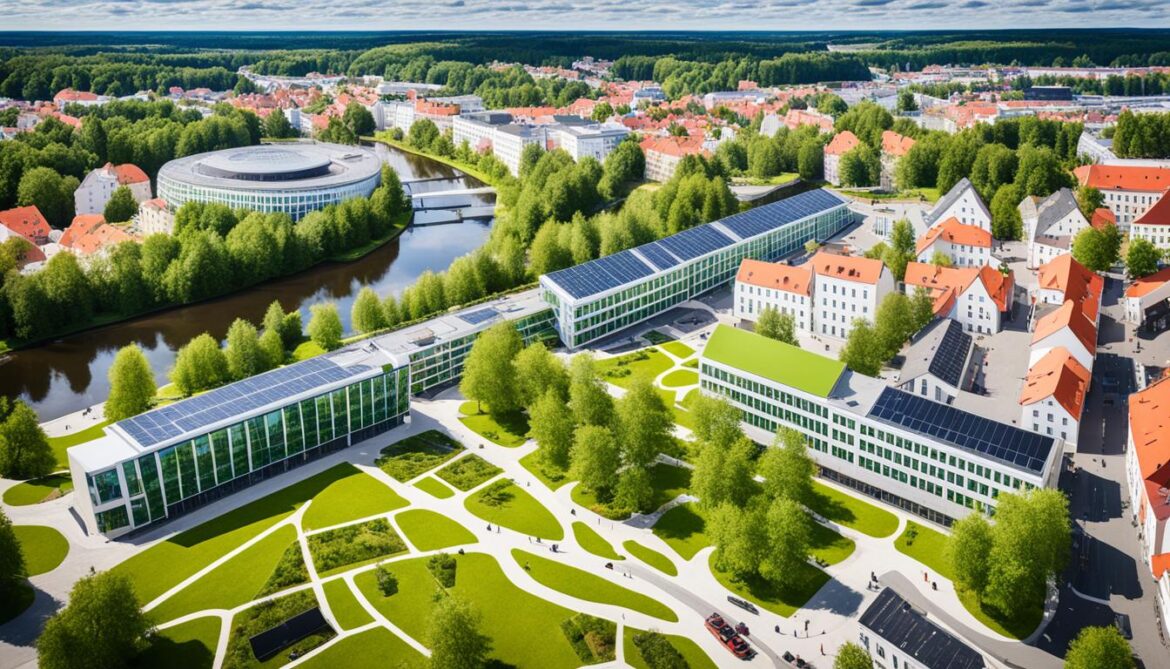
The city of Tartu recognizes the importance of green spaces in enhancing the quality of life for its residents. By revitalizing parks, Tartu aims to create vibrant and accessible recreational areas that encourage outdoor activities and provide a haven for both people and wildlife. These green spaces not only contribute to the well-being of the community but also enhance urban biodiversity by providing habitats for diverse plant and animal species.
Another aspect of Tartu’s commitment to sustainability is seen in the transformation of outdated panel houses into energy-efficient smart houses. By incorporating eco-friendly architecture and sustainable building materials, Tartu is not only reducing the environmental impact of housing but also creating homes that are energy-efficient and comfortable for residents.
Furthermore, Tartu actively promotes the use of renewable energy sources and energy-efficient construction techniques in its urban development projects. By embracing eco-friendly architecture, the city is setting a standard for sustainable construction practices, ensuring that future buildings align with environmental principles.
The efforts undertaken by Tartu in terms of sustainability and eco-friendly practices serve as an inspiration to other cities and communities. Through its dedication to revitalizing parks, promoting urban biodiversity, and transforming houses into energy-efficient smart homes, Tartu is leading the way towards a more sustainable and environmentally conscious future.
Estonia’s Commitment to Energy Efficiency
Estonia has made significant strides in energy efficiency and sustainable development, demonstrating its dedication to environmental sustainability. The country’s commitment to energy efficiency extends beyond buildings and encompasses various aspects of its infrastructure, including transportation, waste management, and urban planning.
One of the key factors driving Estonia’s energy efficiency success is the establishment of minimum energy performance requirements. By implementing these requirements, Estonia ensures that buildings meet the highest standards of energy efficiency, resulting in reduced energy consumption and lower carbon emissions.
Furthermore, Estonia’s sustainable development practices contribute to environmental sustainability by prioritizing resource efficiency, waste reduction, and the adoption of eco-friendly technologies. The country’s efforts in sustainable development go hand in hand with its commitment to energy efficiency, fostering a greener and more sustainable future.
Transportation and Waste Management
Estonia recognizes the importance of sustainable transportation in reducing greenhouse gas emissions. The country has implemented efficient public transportation systems and encourages the use of alternative modes of transport, such as cycling and walking. These initiatives not only reduce carbon emissions but also promote healthier and more active lifestyles among the population.
Additionally, Estonia has implemented effective waste management strategies to minimize environmental impact. The country focuses on waste reduction, recycling, and proper disposal practices to ensure a more sustainable and circular economy. By prioritizing waste management and reducing landfill waste, Estonia contributes to its overall goal of environmental sustainability.
Urban Planning for Energy Efficiency
Estonia recognizes that sustainable urban planning plays a crucial role in achieving energy efficiency. The country promotes the development of energy-efficient buildings and neighborhoods through its urban planning policies and guidelines.
Estonia’s commitment to sustainable urban planning is exemplified by the transformation of outdated panel houses into energy-efficient smart houses. These renovations not only improve energy efficiency but also enhance the overall quality of living for residents.
The country also emphasizes the importance of green spaces and biodiversity in urban areas, creating a balance between development and the preservation of the natural environment.
The table below provides an overview of Estonia’s commitment to energy efficiency in different sectors:
| Sector | Energy Efficiency Measures |
|---|---|
| Buildings | Minimum energy performance requirements for new constructions, promotion of energy-efficient building materials |
| Transportation | Efficient public transportation systems, bike-sharing programs, encouragement of alternative modes of transport |
| Waste Management | Waste reduction, recycling programs, proper disposal practices |
| Urban Planning | Promotion of energy-efficient buildings, revitalization of green spaces, preservation of biodiversity |
Estonia’s commitment to energy efficiency and sustainable development sets an example for other countries striving to achieve environmental sustainability. By prioritizing energy efficiency measures, implementing sustainable transportation and waste management strategies, and embracing sustainable urban planning, Estonia paves the way for a greener future.
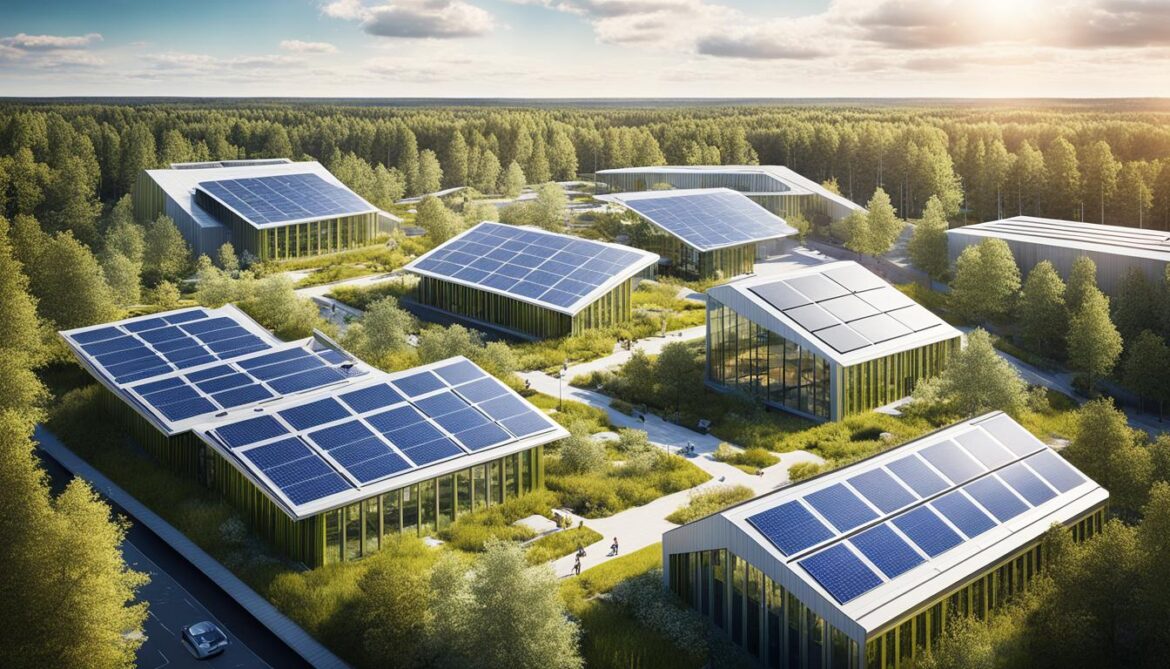
Estonian Biodiversity Strategy and Action Plan
Estonia recognizes the importance of biodiversity conservation and has developed a comprehensive Biodiversity Strategy and Action Plan. This plan addresses the conservation and protection of biodiversity throughout the country, focusing on sustainable use and habitat preservation.
The strategy encompasses various measures to ensure the well-being of Estonia’s natural habitats and species. One key aspect is the monitoring of species and habitats, allowing for a thorough understanding of their condition and enabling targeted conservation efforts. This monitoring provides valuable data for assessing the effectiveness of conservation initiatives and making informed decisions to protect endangered species and habitats.
Furthermore, the Estonian Biodiversity Strategy and Action Plan emphasizes the establishment of protected areas. These areas serve as refuges for biodiversity, safeguarding ecologically significant habitats and vulnerable species from human disturbances. By designating protected areas, Estonia aims to create safe havens for wildlife and facilitate their natural reproduction and survival.
Estonia’s commitment to habitat protection and biodiversity conservation extends beyond designated areas. The country actively promotes nature conservation in various ecosystems, ranging from forests and wetlands to coastal areas and meadows. Through targeted conservation measures and sustainable land management practices, Estonia strives to maintain the ecological balance of these diverse ecosystems.
Preserving biodiversity is not only crucial for the well-being of our natural environment but also for the overall health and sustainability of our society. By conserving Estonia’s biodiversity, we ensure the availability of vital ecosystem services, such as clean water, pollination, and climate regulation, that contribute to human well-being and economic prosperity.
Estonia’s Biodiversity Strategy and Action Plan exemplifies the country’s commitment to a sustainable future. By implementing measures that prioritize biodiversity protection, sustainable use, and habitat preservation, Estonia aims to safeguard its unique natural heritage for future generations.
The Benefits of Biodiversity Conservation in Estonia
Estonia’s dedication to biodiversity conservation yields numerous benefits for both the natural environment and human society. Some of the key advantages include:
- Ecosystem Stability: Preserving biodiversity ensures the resilience and stability of ecosystems, enabling them to withstand environmental changes and threats.
- Species Protection: Conservation efforts protect endangered species and contribute to the recovery of populations facing decline.
- Environmental Education: Biodiversity conservation promotes awareness and understanding of the importance of nature, fostering environmental education and stewardship.
- Tourism and Recreation: Estonia’s diverse and well-preserved natural landscapes attract nature enthusiasts and tourists, supporting local economies.
- Climate Change Mitigation: Healthy ecosystems help mitigate climate change by sequestering carbon dioxide and reducing greenhouse gas emissions.
By prioritizing biodiversity conservation, Estonia not only safeguards its natural heritage but also secures a sustainable future where the benefits of a diverse and thriving environment can be enjoyed by all.
| Benefits of Biodiversity Conservation in Estonia | Description |
|---|---|
| Ecosystem Stability | Preserving biodiversity ensures the resilience and stability of ecosystems, enabling them to withstand environmental changes and threats. |
| Species Protection | Conservation efforts protect endangered species and contribute to the recovery of populations facing decline. |
| Environmental Education | Biodiversity conservation promotes awareness and understanding of the importance of nature, fostering environmental education and stewardship. |
| Tourism and Recreation | Estonia’s diverse and well-preserved natural landscapes attract nature enthusiasts and tourists, supporting local economies. |
| Climate Change Mitigation | Healthy ecosystems help mitigate climate change by sequestering carbon dioxide and reducing greenhouse gas emissions. |
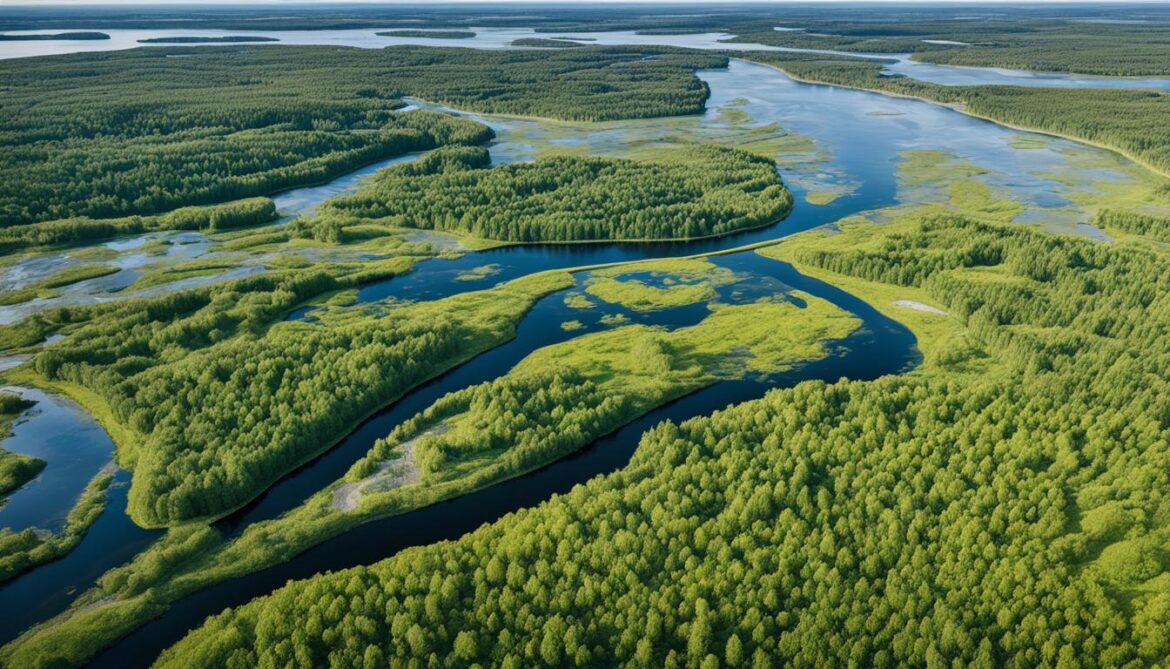
By prioritizing biodiversity conservation, Estonia not only safeguards its natural heritage but also secures a sustainable future where the benefits of a diverse and thriving environment can be enjoyed by all.
Status of Biodiversity in Estonia
Estonia has made significant progress in the conservation of both species and habitats that are of European concern. More than half of these species and habitats in Estonia are currently in a favorable conservation status, a testament to the country’s commitment to protecting its biodiversity.
However, there is still work to be done, as approximately 3% of all species registered in Estonia are endangered. Efforts are being made to prioritize the conservation and preservation of these species and their habitats to ensure their long-term survival.
“Conservation is the key to preserving our natural heritage and ensuring a sustainable future for Estonia’s diverse ecosystems.” – Dr. Anna Kask, Environmental Scientist
Estonia recognizes the importance of habitat preservation and species conservation in maintaining a healthy and balanced environment. By implementing various initiatives and policies, the country strives to protect its unique landscapes and ensure the survival of its endangered species.
It is crucial to continue promoting awareness and understanding of biodiversity conservation in Estonia, as well as encouraging sustainable practices that support habitat preservation and species protection.
Conservation Efforts in Action
Estonia has implemented several projects and initiatives to safeguard biodiversity and promote species conservation. These include:
- The establishment of protected areas and nature reserves to ensure the preservation of critical habitats
- Collaboration with international organizations and partners to implement conservation strategies and share best practices
- The development of species recovery programs to aid the population growth of endangered species
- Public education and awareness campaigns to engage communities in biodiversity conservation
By actively engaging in these conservation efforts, Estonia demonstrates its commitment to preserving its natural heritage and ensuring the sustainable future of its ecosystems.
It is essential for individuals, communities, and policymakers to come together to protect and preserve Estonia’s biodiversity. By prioritizing habitat preservation and species conservation, Estonia can continue to be a shining example of environmental stewardship for the rest of the world.

Estonia’s commitment to biodiversity conservation and habitat preservation guarantees a future where its unique species and ecosystems thrive.
Environmental Management in Estonia
Estonia prioritizes environmental management to ensure the sustainable use and preservation of its natural resources. Through the implementation of various tools and strategies, the country actively monitors and improves the quality of its environment, focusing on waste management, air quality, and water quality.
Waste management plays a critical role in Estonia’s environmental management efforts. The country emphasizes proper waste disposal and recycling practices to minimize its environmental impact. By promoting waste reduction, recycling, and responsible waste treatment, Estonia strives to create a cleaner and more sustainable future.
Air quality monitoring is another key aspect of Estonia’s environmental management initiatives. The country recognizes the importance of maintaining clean and healthy air for the well-being of its population and the environment. Continuous monitoring and assessment of air quality enable prompt actions to minimize pollution and protect public health.
Estonia is committed to ensuring the safety and cleanliness of water sources. The country implements rigorous monitoring programs to assess water quality and identify any potential risks or contamination. These efforts aim to safeguard water resources, protect aquatic ecosystems, and maintain the availability of clean and safe drinking water for the population.
Overall, Estonia’s dedication to environmental management reflects its commitment to sustainable practices and responsible stewardship of its natural assets. By prioritizing waste management, air quality, and water quality, the country strives to create a cleaner and more sustainable environment for present and future generations.
Environmental Management Initiatives in Estonia
Estonia has implemented several initiatives to effectively manage and protect its environment:
- Establishment of waste management programs to promote waste reduction and proper disposal.
- Implementation of air quality monitoring systems to assess and improve air pollution levels.
- Regular water quality monitoring to ensure the safety and cleanliness of water sources.
- Promotion of sustainable practices and responsible waste treatment in industries and communities.
- Collaboration with international organizations to exchange knowledge and best practices in environmental management.
In Estonia, environmental management is not just a responsibility, but a shared commitment towards a greener and more sustainable future.
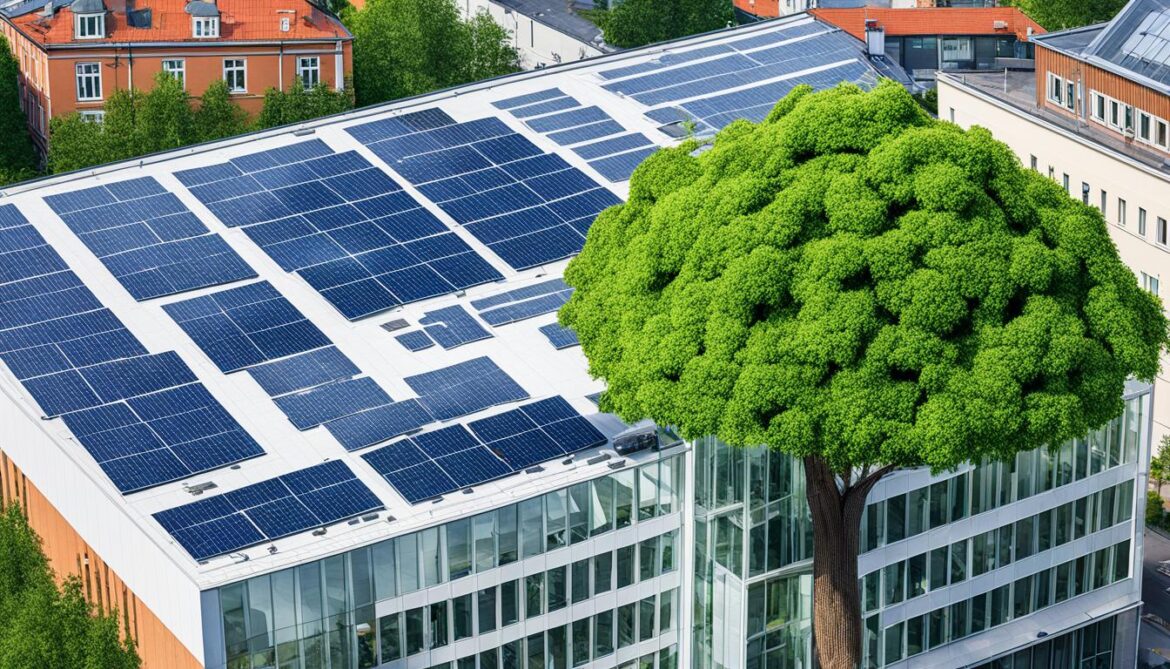
| Environmental Aspect | Management Approach |
|---|---|
| Waste Management | Promotion of waste reduction, recycling, and responsible waste treatment practices. |
| Air Quality | Continuous monitoring and assessment of air quality, prompt actions to minimize pollution. |
| Water Quality | Rigorous monitoring programs to assess water quality, safeguard water resources. |
Climate Change and Sustainability in Estonia
Estonia is well aware of the far-reaching consequences of climate change and is committed to implementing sustainable solutions to mitigate its impact. Recognizing the urgency of the issue, the country has set ambitious goals for promoting renewable energy, reducing greenhouse gas emissions, and fostering sustainable development practices.
One of Estonia’s key objectives is to increase the share of renewable energy in its overall energy consumption. By transitioning away from fossil fuels and investing in clean, sustainable sources such as wind, solar, and biomass, Estonia aims to reduce its dependence on non-renewable resources and minimize greenhouse gas emissions. This shift towards renewable energy not only helps combat climate change but also contributes to the country’s energy security and economic growth.
In addition to embracing renewable energy, Estonia is actively working towards reducing greenhouse gas emissions across various sectors. The country is implementing measures to improve energy efficiency, enhance waste management systems, and promote sustainable transportation options. By optimizing resource utilization and adopting eco-friendly practices, Estonia strives to curb its carbon footprint and create a greener, more sustainable future.
Estonia’s commitment to sustainable development encompasses not only environmental aspects but also social and economic dimensions. The country prioritizes the integration of sustainability principles in urban planning, infrastructure development, and resource management. By promoting green building practices, investing in energy-efficient technologies, and fostering circular economy initiatives, Estonia aims to achieve long-term sustainable growth that benefits both present and future generations.
By setting goals for renewable energy, reducing greenhouse gas emissions, and fostering sustainable development practices, Estonia is taking active steps towards addressing climate change and creating a more sustainable future for its citizens.
The Journey towards Renewable Energy
Estonia’s commitment to renewable energy is reflected in its ambitious targets and initiatives. The country aims to increase the share of renewables in its final energy consumption to 50% by 2030. This transition not only reduces greenhouse gas emissions but also enhances energy security and fosters technological innovation.
Renewable energy sources such as wind, solar, and biomass play a crucial role in Estonia’s energy mix. The country’s favorable geographical conditions make it suitable for wind energy production, while its emphasis on research and development has led to advancements in solar energy technologies. Furthermore, Estonia promotes the use of biomass, particularly wood pellets and forest residues, for heating and electricity generation, utilizing its abundant forest resources sustainably.
| Renewable Energy Sources in Estonia | Current Capacity |
|---|---|
| Wind Energy | ~494 MW |
| Solar Energy | ~50 MW |
| Biomass | ~447 MW |
The table above illustrates Estonia’s current renewable energy capacity, highlighting the significant contribution of wind, solar, and biomass sources.
Estonia’s commitment to renewable energy extends beyond its borders. As a member of the European Union, Estonia actively participates in cross-country initiatives to promote clean energy and support the union’s commitment to carbon neutrality by 2050. By collaborating with other countries and sharing best practices, Estonia aims to contribute to the global effort in combating climate change and achieving a sustainable future.
Through its dedication to renewable energy, Estonia is not only reducing its environmental impact but also advancing its position as a leader in sustainable development and clean technology innovation. The country’s commitment serves as an inspiration and exemplar for other nations striving to create a more sustainable and resilient future.

Conclusion
Estonia’s commitment to blending biodiversity with the built environment and fostering sustainability and harmony in urban spaces has made it a leader in energy efficiency and sustainable development in Europe.
With its energy-efficient buildings, sustainable infrastructure initiatives, and dedication to environmental conservation, Estonia is setting an example for other countries to follow.
The country’s focus on preserving biodiversity and promoting sustainable practices ensures a greener future for generations to come.
FAQ
What makes Estonia a leader in energy efficiency?
Estonia boasts some of the most energy-efficient buildings in Europe, with the lowest energy consumption. This success can be attributed to the country’s establishment of minimum energy performance requirements in 2019, as well as the tireless efforts of its researchers and engineers. Estonia has also implemented various sustainable measures, such as bike-sharing programs and efficient public transportation, to further reduce the country’s carbon footprint.
How does Estonia promote sustainable development in construction?
Estonia has embraced sustainable development practices, including the implementation of green building certification programs to ensure new constructions meet stringent sustainability standards. These certifications recognize buildings that prioritize resource efficiency, waste reduction, and minimizing environmental impact.
What sustainable infrastructure initiatives are implemented in Estonia?
Estonia goes beyond just green buildings and implements sustainable infrastructure solutions to promote a greener future. The country has initiatives such as bike-sharing programs and efficient public transportation to reduce carbon emissions and promote a healthier lifestyle. Additionally, Estonia embraces the use of green building materials in construction projects to minimize waste and enhance energy efficiency.
How is Tartu leading the way in sustainability?
Tartu, Estonia’s second-largest city, is taking the lead in sustainability by participating in the European Commission’s 100 Climate-Neutral and Smart Cities initiative. The city has implemented various sustainability initiatives, including the revitalization of parks, promotion of urban biodiversity, and transformation of outdated panel houses into energy-efficient smart houses. Tartu also promotes eco-friendly architecture, encouraging the use of sustainable building materials and energy-efficient construction techniques.
How is Estonia committed to energy efficiency?
Estonia has made significant strides in energy efficiency and sustainable development through its establishment of minimum energy performance requirements and dedication to environmental sustainability. The country’s commitment to energy efficiency extends beyond buildings to various aspects of its infrastructure, including transportation, waste management, and urban planning.
What is Estonia doing to conserve biodiversity?
Estonia has a Biodiversity Strategy and Action Plan that addresses the conservation and protection of biodiversity in the country. The plan includes measures for sustainable use and protection of biodiversity, monitoring of species and habitats, and the establishment of protected areas. Estonia is committed to preserving its biodiversity and ensuring the well-being of its natural habitats and species.
What is the status of biodiversity in Estonia?
Estonia has seen improvements in the conservation status of both species and habitats of European concern. More than half of these species and habitats in Estonia are in favorable conservation status. However, there is still work to be done, as 3% of all species registered in Estonia are endangered. Efforts are being made to protect and preserve the biodiversity of Estonia’s landscapes and ecosystems.
How does Estonia manage its natural resources?
Estonia has implemented various environmental management tools to monitor and improve the quality of its natural resources. This includes measures for waste management, air quality monitoring, and ensuring the safety and cleanliness of water sources. The country is committed to sustainable environmental practices and the responsible management of its natural assets.
What is Estonia’s approach to climate change and sustainability?
Estonia acknowledges the effects of climate change and is working towards sustainable solutions. The country has set goals for increasing the share of renewable energy in its energy consumption, reducing greenhouse gas emissions, and promoting sustainable development practices. Estonia is taking steps to mitigate the impact of climate change and create a more sustainable future for its citizens.
How does Estonia contribute to the built environment and sustainability?
Estonia’s commitment to blending biodiversity with the built environment and fostering sustainability and harmony in urban spaces has made it a leader in energy efficiency and sustainable development in Europe. With its energy-efficient buildings, sustainable infrastructure initiatives, and dedication to environmental conservation, Estonia is setting an example for other countries to follow. The country’s focus on preserving biodiversity and promoting sustainable practices ensures a greener future for generations to come.







